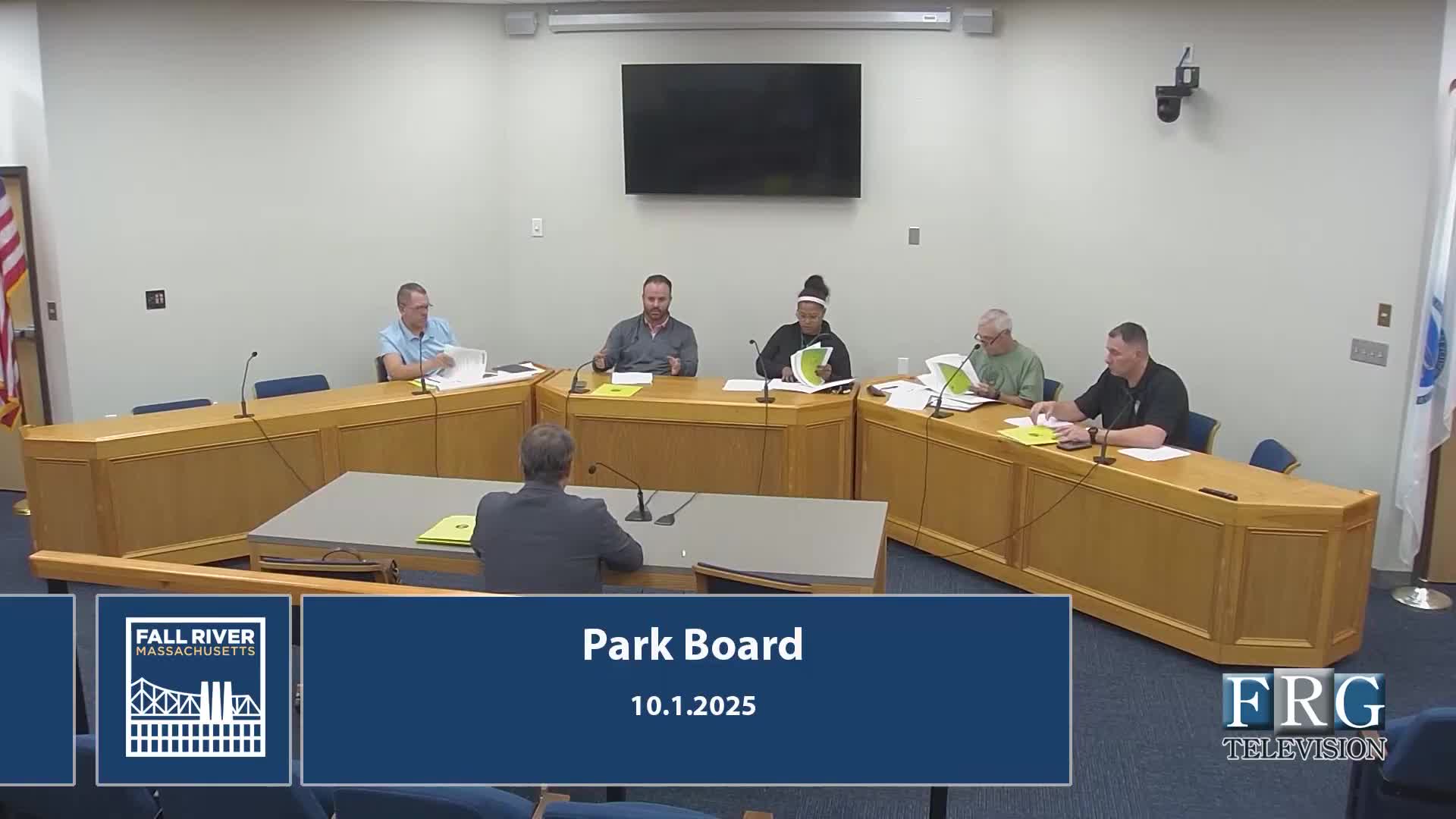Fall River Council Discusses Placing Technology Cabinets in Olmsted Parks
October 02, 2025 | Fall River City, Bristol County, Massachusetts
This article was created by AI summarizing key points discussed. AI makes mistakes, so for full details and context, please refer to the video of the full meeting. Please report any errors so we can fix them. Report an error »

In a recent meeting of the Fall River Park Board, discussions centered around the installation of new utility cabinets in local parks, particularly in historic Olmsted Parks like Kennedy and North. The proposal aims to enhance service coverage for approximately 15,000 homes in the area, but it raises significant concerns regarding aesthetics, maintenance, and regulatory approvals.
The board members expressed apprehension about placing these cabinets in parks, especially given their permanent nature and the potential impact on the historic character of Olmsted Parks. One board member noted that while the installation could serve a practical purpose, it might not align with the visual and historical integrity of these spaces. The conversation highlighted the need for careful consideration of where these structures could be placed without obstructing sidewalks or violating accessibility standards.
A key point of discussion was the necessity of obtaining approval from the city council and the historic commission before proceeding. The board acknowledged that even if they approved the installation, the city council could ultimately deny it based on safety or aesthetic concerns. This layered approval process underscores the complexities involved in urban planning, particularly in areas with historical significance.
Maintenance responsibilities were also a focal point. The representatives assured the board that their organization would handle all maintenance for the cabinets, alleviating concerns about additional burdens on the city. They proposed a collaborative approach, suggesting that beautification efforts, such as landscaping or artistic designs, could mitigate aesthetic issues associated with the cabinets.
The meeting concluded with a recognition of the importance of expanding utility services in Fall River, despite the challenges posed by historical preservation and community aesthetics. As the board prepares to move forward, they will need to navigate the regulatory landscape carefully to ensure that the needs of the community are met while respecting the historical context of the parks. The next steps will involve further discussions with city officials and potentially engaging the community in the design process to foster a sense of ownership and acceptance of the new installations.
The board members expressed apprehension about placing these cabinets in parks, especially given their permanent nature and the potential impact on the historic character of Olmsted Parks. One board member noted that while the installation could serve a practical purpose, it might not align with the visual and historical integrity of these spaces. The conversation highlighted the need for careful consideration of where these structures could be placed without obstructing sidewalks or violating accessibility standards.
A key point of discussion was the necessity of obtaining approval from the city council and the historic commission before proceeding. The board acknowledged that even if they approved the installation, the city council could ultimately deny it based on safety or aesthetic concerns. This layered approval process underscores the complexities involved in urban planning, particularly in areas with historical significance.
Maintenance responsibilities were also a focal point. The representatives assured the board that their organization would handle all maintenance for the cabinets, alleviating concerns about additional burdens on the city. They proposed a collaborative approach, suggesting that beautification efforts, such as landscaping or artistic designs, could mitigate aesthetic issues associated with the cabinets.
The meeting concluded with a recognition of the importance of expanding utility services in Fall River, despite the challenges posed by historical preservation and community aesthetics. As the board prepares to move forward, they will need to navigate the regulatory landscape carefully to ensure that the needs of the community are met while respecting the historical context of the parks. The next steps will involve further discussions with city officials and potentially engaging the community in the design process to foster a sense of ownership and acceptance of the new installations.
View full meeting
This article is based on a recent meeting—watch the full video and explore the complete transcript for deeper insights into the discussion.
View full meeting
